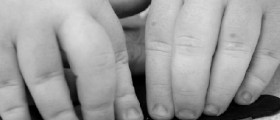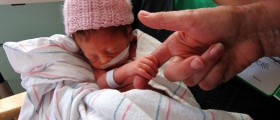
While speech disorder may stand for a condition which manifests through one’s incapability of producing sounds, language disorder may present difficulties related to combining words in order to communicate.
There are several different types of speech disorders as well as language disorders. Also, a special therapy exists, helping people overcome their difficulties, regardless whether these are connected to speech, language or both. This therapy is called speech and language therapy.
Speech Disorders
Taking into consideration that people suffering from speech disorders have problems which are related to phonation, resonance, sound production, movements of the vocal cords, pitch variations and various other factors such as respiration and voice itself, there are many different areas which speech and language therapy needs to take into consideration.
Therefore, depending on the symptoms of the condition, the following classification of speech disorders exist.
Stuttering is a speech disorder, manifesting through one’s inability to speak out a whole word, cutting it into smaller parts which can repeated before the whole word is uttered. Clustering is a similar condition, also being considered a speech disorder.One of the rarest conditions of this type is dysprosody, characteristic for the alterations in intensity and the timing of parts of the spoken discourse, as well as in rhythm, cadence and intonation during word utterance. Dysprosody is commonly related to some underlying neurological conditions such as brain tumors and vascular traumas in the brain.
If a person is completely deprived of the capability of speaking, he/she is diagnosed with muteness.
Another category of speech disorders are speech sound disorders. These manifest through one’s incapability to utter certain groups of sounds, such as consonants for example, or some phonemes.
Furthermore, if a person has suffered from physical problems affecting his/her larynx or other body parts related to sound production, these impairments are called voice disorders.
Finally, dysarthria is a speech disorder standing for weakness of certain muscles involved in speech production, caused by damage to the brain and apraxia of speech is a condition manifesting through mixing up the sounds in words, producing them strangely and inappropriately.
Children
Among children who can suffer from speech disorders, many different illnesses present risk factors. Therefore, children who have suffered from certain birth complications and swallowing problems, as well as those who are experiencing developmental delay, genetic disorders, cranial nerve damage, craniofacial anomalies, language delay or some other articulation disorders, all are likely to be diagnosed with speech some of the previously mentioned speech disorders.
On the other hand, some conditions may be the culprits behind speech and language disorders in both children and adults. These are cerebral palsy, injuries to the head, loss of hearing or hearing problems, various learning disorders such as dyslexia, some physical disabilities as well as strokes. Additionally, voice disorders, motor speech disorders, naming difficulties, cognitive communication disorders, pragmatics, various surgeries done on the language production-related organs and certain forms of cancer all may potentially go hand-in-hand with speech disorders.
Adults
As far as adults and speech disorders are concerned, there are several conditions which are exclusive risk factors for these people. Basically, those who are suffering from certain issues related to eating, swallowing and feeding may develop speech disorders, along with individuals suffering from diseases such as progressive neurological conditions, cancers in the head area and mental health problems. Ultimately, people who have undergone transgender voice therapy, transitioning from male to female through surgeries, are likely to experience speech disorders too.
Speech and Language Therapy
Before any help can be given to people suffering from speech disorders, their conditions need to be properly assessed. For these purposes, standardized assessment tools exist, being specially designed for children, children old enough to go to school, adolescents and adults. The swallowing and other language production factors are examined in the patients and the therapists are likely to pay attention to the strength, co-ordination, range of movement, symmetry and speed of cranial nerves.
Once the disorder is assessed, the patient is sent to a speech pathologist who applies a proper treatment.
The treatment itself may involve promoting health habits regarding eating, swallowing, chewing, hearing and many other factors, preventing any speech problems which might take place due to anomalies in them. Furthermore, there are many diagnostic and treatment programs available for people suffering from speech disorders, raising the level of awareness regarding these conditions, offering support and granting people training which can help them overcome their speech problems.
This form of care may be received both in public and private hospitals.
All in all, there are many speech disorders and all of these can be triggered by various factors, some being more severe than the others. Either way, it is very important to seek proper and timely medical assistance. Thereby, your condition will be assessed, diagnosed and treated.Living without the ability to speak or use language can be extremely debilitating. Therefore, do your best to seek help if you are bothered with such problems.

















Your thoughts on this
Loading...